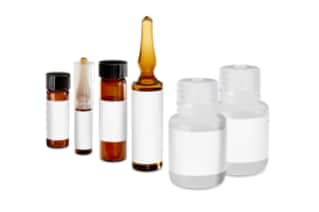
|
Detection Method |
MS |
|
Formulation |
Liquid |
|
Storage Condition |
4C (Fridge) |
|
System Type |
LCMS |
|
Shelf Life |
6 months |
|
Shipping Condition |
Ambient |
|
Type |
Reference |
|
UNSPSC |
41116107 |
|
Application |
System Performance |
|
Product Type |
Standard Kits |
|
Units per Package |
1 pk |

ToF G2-S Standard Kit - 2
The G2-S ToF incorporates StepWave ion optics to provide unparalleled durability in sensitivity and proven quantitative time-of-flight and UPLC/MS technologies to deliver multiple outcomes at the same time. The system can provide UPLC-compatible mass resolution, matrix-tolerant dynamic range, quantitative performance, mass accuracy, and excellent speed of analysis.
The Standards Kit listed here is designed for the verification of system performance for Tof G2-S, and it is shipped with the following components: Standard 1: 25mL, Sodium Iodide, 2 µg/µL in 50:50 2-Propanol: Water Standard 2: 25mL, Sodium Hydroxide, 0.5mM in 90:10 2-Propanol: Water Standard 3: 2 mL of PEG Maldi 10 mg/mL 50:50 Acetonitrile: Water Standard 4: 25 mL of the following 6 compounds: Acetaminophen (4-Acetamidophenol) @2 ng/ul, Caffeine @ 2 ng/ul, Sulfadimethoxine @ 1 ng/ul Verapamil @ 500 pg/ul Chloramphenicol @ 500 pg/ul 17-A-Hydroxyprogesterone @ 50 ng/ul in 90% MeOH:10% Water Standard 5: 50 mg Chloramphenicol Standard 6: 5 mg Sulfadimethoxine.
Recommended to store the kit by refrigerating it between the range of 2 to 8 C, advised temperature is 4 C. The ToF G2-S Standard Kit - 2 contains hazardous material which requires special freight handling, so kindly ensure when it is received, it is handled with care using proper lab equipment. The shelf life of the ToF G2-S Standard Kit - 2 is 6 months.
You can increase your productivity with the ideal lab equipment. To learn more about the different Standard Kits, such as the ToF G2-S Standard Kit listed here, or to find different products that work with it, you can browse our website and refer to our catalog to shop for lab equipment so you can replenish your stock and add to your existing equipment portfolio. Our website enables you to shop for lab equipment directly, as well as to reach out with any queries you may have. You can direct these queries and concerns to a member of our staff, located in one of our numerous offices located globally.
You might also be interested in reviewing the ToF G2-S Standard Kit - 3, which has also been designed for the verification of system performance for Tof G2-S and contains: Standard 1: 2 vials of 2.5 mg D(+)-Raffinose, Standard 2: 5 vials of 10 mg Matrix (Cyano-4-hydroxycinnamic acid), Standard 3 2 mL of formic Acid, Standard 4: 3 mL Aqueous Ammonia.
What Is The Importance Of Obtaining High Resolution In Chromatography?
Resolution is a function of peak width and retention time, both of which are inherent properties of the chromatographic process; resolution measurements can be used for optimizing separations. The higher the resolution obtained, the better results can be analyzed and with higher accuracy.